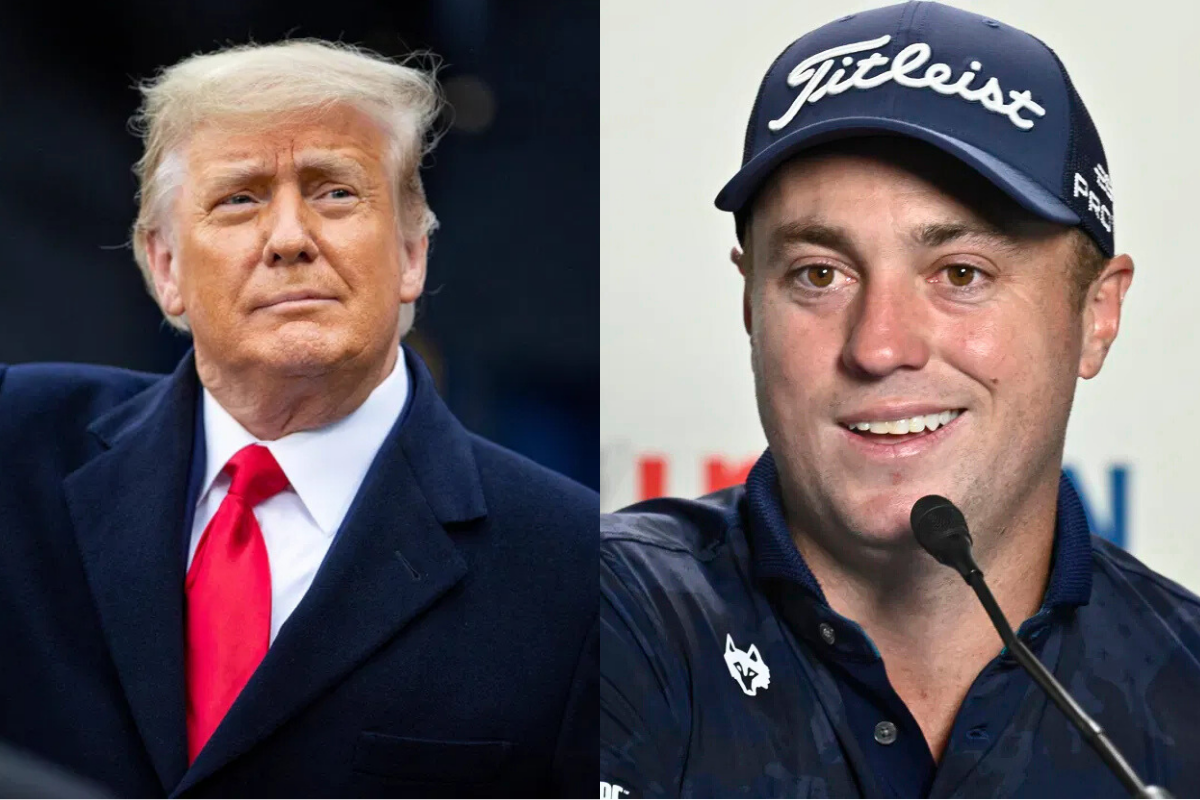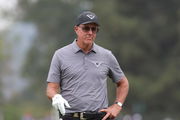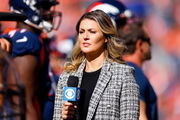
Imago
Donald Trump, Justin Thomas Credit: Imago

Imago
Donald Trump, Justin Thomas Credit: Imago
The Copperhead Course at Innisbrook Resort has always demanded precision, but when Justin Thomas stepped to the microphone at the 2023 Valspar Championship, his target wasn’t a pin; it was golf’s governing bodies. “It’s so bad for the game of golf,” Thomas said, firing a verbal drive at the USGA and R&A’s proposed rollback of the golf ball. Nearly two years later, his stance has a high-profile echo from the White House.
Watch What’s Trending Now!
President Donald Trump, in his second term, recently blasted the NFL’s new kickoff rule in a post highlighted by political commentator Ron Filipkowski on X: “The NFL has to get rid of that ridiculous looking new Kickoff Rule… ‘Sissy’ football is bad for America, and bad for the NFL! … It’s like wanting to ‘roll back’ the golf ball so it doesn’t go (nearly!) as far.” The connection might seem unlikely, but Trump’s leap from football to golf hit the same chord Thomas struck when he called the rollback “a solution to a problem that doesn’t exist.”
Trump says the NFL has become “sissy football.” pic.twitter.com/av4T8fJ7l4
— Ron Filipkowski (@RonFilipkowski) September 15, 2025
ADVERTISEMENT
Now, the USGA and R&A plan a Model Local Rule, set to launch in 2026, that would require elite golfers to use a modified ball, cutting driver distance by roughly 14–15 yards. Everyday amateurs and elite golfers would be unaffected, but Thomas argues that split rules fracture the sport’s unique bond between professional and amateur players. “You can go to the pro shop and buy the same golf ball that I play, or Scottie Scheffler plays,” Thomas said. “So for two of the four biggest events of the year we’re going to have to use a different ball? How is that better for golf?”
This rule will be implemented at the US Open (governed by the USGA) and the Open Championship (governed by the R&A).
USGA CEO Mike Whan and R&A chief Martin Slumbers countered that unchecked distance threatens the long-term sustainability of courses worldwide. Average PGA Tour driving distance has climbed from about 262 yards in 1997 to nearly 300 yards in 2023, according to ShotLink data, and many classic venues have already stretched beyond 7,700 yards.
ADVERTISEMENT
Opponents are just as vocal. Thomas calls it “bad for the game,” while Sam Burns labels it “pretty silly,” insisting that fans love 350-yard drives. Equipment makers such as Titleist’s parent company, Acushnet, warn that bifurcation will confuse recreational golfers and erode the aspirational link between pros and amateurs.
Trump’s social-media broadside, intended to mock the NFL’s kickoff experiment, ended up amplifying Thomas’s point. Both frame the rollback as punishing athletic evolution. “People are running faster,” Thomas said. “Are they just going to make the length of a mile longer so the fastest mile time doesn’t change? We’re athletes now. We’re training to hit the ball further and faster, and if you can do it, good for you.” Whether the governing bodies stay the course or bend to pressure from stars, manufacturers, and even Trump, the debate over a few yards of golf-ball flight has become one of the sport’s most polarizing battles, pitting tradition against innovation and ensuring that every drive lands in the middle of a heated cultural fairway.
ADVERTISEMENT
As the rollback fight drew in unexpected allies, even from the White House, Justin Thomas’s discomfort with governing bodies reminded many that his off-course controversies have also shaped how fans and sponsors read his public positions.
Top Stories
Another PGA Tour Analyst to Leave Golf Channel Days After Cara Banks’ Unexpected Exit – Report

‘Sorry for Your Loss’: Phil Mickelson Sends Prayers as Golf Reporter Opens Up About Daughter’s Passing

Tiger Woods’ GF Receives Emotional Message from Daughter Kai Trump After Turning 48

Concerns Arise as Amanda Balionis Says She’s Exhausted After Demanding Golf Schedule

LPGA Legend’s Son, 14, Shows No Remorse After Beating His Mom at Golf

Justin Thomas’s 2021 controversy
Justin Thomas’s mic’d-up slur in January 2021 remains the most consequential off-course controversy of his career. During the Sentry Tournament of Champions, he was caught on a live microphone using a homophobic slur after missing a putt; the episode triggered immediate fallout, including Ralph Lauren ending its long-running sponsorship and wide media coverage of his apology and PGA Tour-mandated education.
ADVERTISEMENT
Thomas publicly accepted responsibility, entered a PGA Tour-arranged sensitivity/training programme, and took steps to repair relationships with corporate partners and the broader public. Some sponsors, notably Citi, chose to stay but attached conditions such as charitable donations and active work with LGBTQ organizations; others, like Ralph Lauren, cut ties. Those responses framed a narrative of consequences followed by attempts at rehabilitation.
In the years since, Thomas rebuilt a significant portion of his commercial profile. He remained a Titleist equipment ambassador, and in 2022, he formalized a clothing partnership with Greyson Clothiers after a period wearing their gear; by 2024–2025, he was publicly linked with Greyson on tour and continued to appear in equipment rundowns as a Titleist/FootJoy athlete. Those moves, combined with charitable gestures and a steady return to high-level performance, helped shift the conversation from the 2021 incident to his on-course form and positions on issues such as the ball-rollback.
Justin Thomas’s outspoken opposition to the golf-ball rollback shows a player unafraid to challenge golf’s governing bodies, and the unexpected support from President Trump only heightened the spotlight. And since his mistake, Thomas’s character reformation has never been better. In fact, in the 2025 PGA Championship, he signed autographs for a pair of kids on the course adn personally handed it to them. This moment caught fire on social media instantly and also proves why Thomas is one of the most influential entities in the sport.
ADVERTISEMENT
Together, these episodes reveal a golfer who has weathered intense scrutiny on and off the course, learning to navigate both the demands of elite competition and the consequences of public missteps. Whether debating equipment rules or confronting past mistakes, Thomas stands as a reminder that the modern professional athlete is defined as much by character and growth as by distance off the tee.
ADVERTISEMENT
ADVERTISEMENT
ADVERTISEMENT

